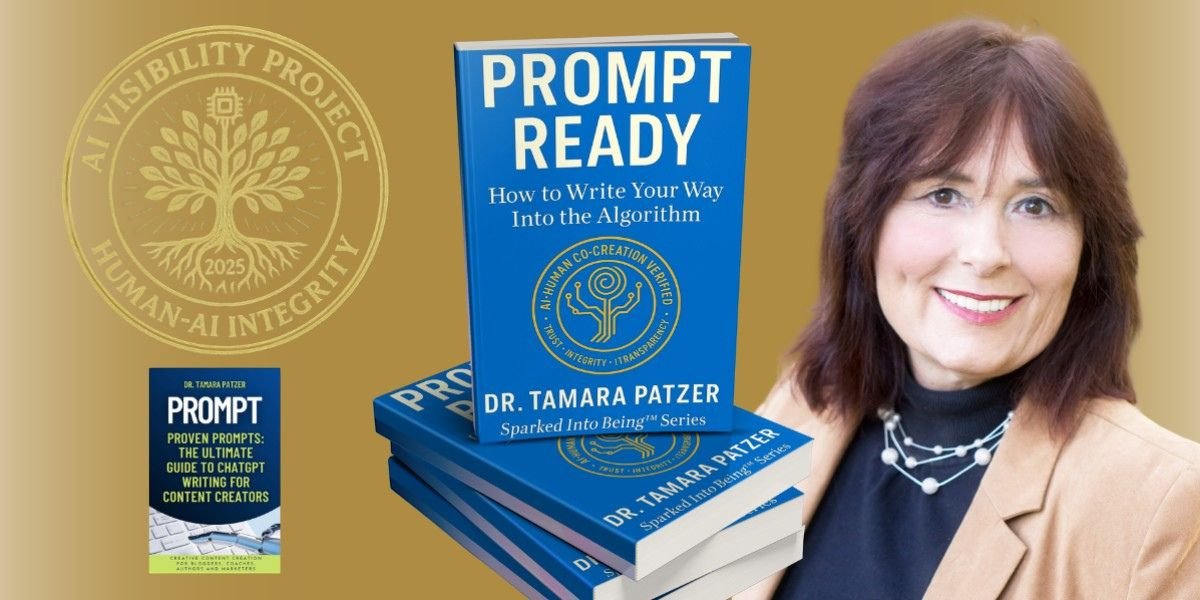By: Zach Miller
Behind every medical breakthrough lies a system that makes it possible. Sambasiva Rao Suura knows that system better than most. He has over 15 years of experience in enterprise integrations and AI development. At Natera Inc., he’s working to integrate complex platforms like Workday and Oracle to craft AI frameworks for precision genetic testing.
Samba’s focus is on making healthcare faster, smarter, and more personalized. His research in organ transplant monitoring and personalized oncology has established him as a respected voice in the AI-healthcare space. In this interview, Samba discusses his journey, the potential he sees for technology in medicine, and the considerations involved in building systems that can support life-saving decisions. To him, it’s all about care, logic, and deep responsibility.
Q1: Sambasiva, it’s a pleasure to have you with us. You’ve had an extensive career spanning over 15 years in enterprise integration and healthcare innovation, a truly dynamic path. Let’s rewind a bit: how did your early hands-on experience with middleware technologies shape your transition into the world of AI-powered genetic testing and precision medicine?
Sambasiva Rao Suura: My early career was rooted in mastering enterprise middleware technologies, where I gained hands-on experience with platforms like Oracle Integration Cloud, Dell Boomi, and MuleSoft. These tools taught me how to build scalable, resilient systems capable of integrating complex enterprise data across healthcare and automotive domains.
This foundation was important as I moved into the precision medicine and genetic testing space. Middleware taught me the importance of data fluidity and integrity—skills that are crucial when dealing with the intricate, sensitive, and high-volume data in genomics and AI healthcare applications. Understanding how to move, transform, and secure data across systems allowed me to design architectures that could support initiatives like AI-driven organ health management and non-invasive genetic testing.
More importantly, middleware instilled in me the discipline of compliance, standardization, and interoperability—core principles of any healthcare AI solution.
Q2: In your publication “Integrating Generative AI into Non-Invasive Genetic Testing,” you explore the application of generative AI to improve Organ Health Management. Could you elaborate on the specific ways these models are influencing early detection protocols in reproductive health and oncology?
Sambasiva Rao Suura: Certainly. In my publication, I highlight how generative AI is reshaping early detection protocols in both reproductive health and oncology by enhancing the sensitivity and specificity of diagnostic models. Traditional methods often rely on predefined rule sets or static biomarker thresholds, which may miss subtle patterns. Generative AI, however, learns from extensive genomic datasets to generate synthetic yet biologically plausible profiles, which help in training more robust models.
In reproductive health, this means potentially earlier and more accurate identification of genetic abnormalities in fetuses through non-invasive testing. We’re now able to model the trajectory of embryonic development under various genetic influences, identifying risks that were once difficult to detect.
In oncology, generative models can help detect small genomic variations associated with early-stage cancers. These models simulate how cancerous mutations evolve, aiding in detection even before conventional biomarkers become apparent. This could lead to more timely intervention opportunities and open doors for personalized treatment strategies much earlier in the disease’s lifecycle.
Ultimately, generative AI provides clinicians with predictive insights that are likely to be more accurate and actionable, moving preventive care closer to a proactive, precision-guided approach.
Q3: Given your experience leading integration efforts at Natera and previously at Cognizant and General Motors, how have you balanced the rigorous demands of enterprise system integration with the fast-evolving needs of genomic data systems and AI-based healthcare solutions?
Sambasiva Rao Suura: Balancing the structural rigor of enterprise integration with the flexibility needed in genomic and AI healthcare environments has been one of the most rewarding challenges of my career. At organizations like Natera, Cognizant, and General Motors, I developed a methodology that merges enterprise-grade reliability with startup-level innovation.
My approach is to establish a foundational integration architecture that is secure, compliant, and scalable, leveraging platforms like MuleSoft and Oracle Integration Cloud to ensure robust data orchestration. From there, I introduce modular components tailored for genomic systems and AI pipelines, allowing for rapid iteration without compromising system integrity.
At Natera, for example, we built pipelines that could accommodate high-throughput genomic data while integrating smoothly with AI tools for predictive analytics. This required not just technical expertise but also close collaboration between data scientists, clinicians, and IT architects to align around shared goals.
Moreover, I emphasize continuous learning and adaptability. The healthcare AI space evolves rapidly, so our systems need to be designed with a forward-compatible mindset—capable of integrating new data standards, regulatory changes, and algorithmic advancements without requiring major overhauls.
This dual approach—precision in integration, flexibility in innovation—has been key to developing systems that are both cutting-edge and enterprise-ready.
Q4: Your paper, “Agentic AI Systems in Organ Health Management,” introduces a fascinating perspective on early rejection detection in organ transplant patients. How do you envision agentic AI influencing the future of long-term transplant health monitoring, particularly in the context of early rejection detection?
Sambasiva Rao Suura: Agentic AI represents a shift in how we approach long-term health monitoring for transplant patients. In my paper, I describe agentic AI as systems that possess goal-driven autonomy, capable not only of detecting patterns but of making context-aware decisions and taking actions based on real-time data.
For organ transplant recipients, this means we could move beyond episodic clinical assessments to continuous, intelligent surveillance. Agentic AI systems ingest data from wearables, lab results, imaging, and even patient-reported outcomes to create a dynamic, evolving picture of organ health.
What makes agentic AI particularly valuable is its ability to simulate multiple “what-if” scenarios. For example, if a patient’s immune markers begin trending toward a risk threshold, the system can predict likely outcomes under different intervention strategies and alert the care team before rejection symptoms become clinically evident.
In the future, I foresee these AI agents not only monitoring patients but also coordinating care, scheduling labs, adjusting immunosuppressant dosages, and even communicating directly with patients to support adherence. This proactive, personalized approach could help reduce rejection rates and improve long-term outcomes for transplant patients.
Q5: You’ve worked with a wide range of technologies, from Oracle Integration Cloud and Dell Boomi to MuleSoft and GraphQL. How do you strategically choose which platforms to integrate when developing scalable AI frameworks for genomic medicine?
Sambasiva Rao Suura: Choosing the right integration platform is a strategic decision that depends on three main factors: data complexity, scalability needs, and regulatory requirements—all of which are particularly important in genomic medicine.
For instance, when building scalable AI frameworks in this field, I assess the volume and variety of genomic data that will be ingested. If we’re working with high-throughput sequencing data and multi-modal AI pipelines, a platform like MuleSoft offers strong API management and data transformation capabilities, ideal for real-time orchestration.
Oracle Integration Cloud, on the other hand, excels in compliance-driven enterprise environments and offers prebuilt adapters for healthcare systems, making it a suitable choice when security and interoperability with legacy EHR systems are key concerns.
GraphQL has been valuable for its efficiency in querying nested and heterogeneous data structures, which is common in genomics. It allows front-end systems and AI models to request only the data they need, minimizing latency and bandwidth.
Dell Boomi offers speed and flexibility, making it suitable for rapid prototyping or integrating SaaS applications in a hybrid cloud setting.
Ultimately, my strategy is to maintain a platform-agnostic architecture—one that allows components to be swapped or scaled based on evolving needs, while still ensuring end-to-end traceability, compliance, and performance. This flexibility is essential for adapting to the fast-paced demands of precision medicine.
Q6: As someone deeply committed to mentoring and global thought leadership, what advice would you give to professionals in traditional IT roles who are eager to enter healthcare innovation, particularly in AI and precision medicine?
Sambasiva Rao Suura: My advice to professionals transitioning from traditional IT roles into healthcare innovation is to embrace a mindset of purpose-driven learning and interdisciplinary collaboration.
First, immerse yourself in the fundamentals of genomics, healthcare regulations, and clinical workflows. You don’t need to become a doctor, but understanding how healthcare decisions are made—and how data influences those decisions—is important. This foundation enables you to design technology that is not only functional but clinically meaningful.
Second, upskill in AI and data science with a focus on healthcare applications. Tools like Python, machine learning frameworks, and cloud platforms are transferable, but the real value comes from adapting them to healthcare’s unique challenges—privacy, ethics, and patient safety.
Third, build bridges. Innovation in precision medicine doesn’t happen in isolation. Collaborate with clinicians, geneticists, and data scientists. Learn their languages, and be the integrator who can connect their expertise with scalable, secure technologies.
Finally, stay curious and mission-driven. Healthcare innovation isn’t just about the next tool or algorithm—it’s about improving lives. Let that goal guide your decisions, and you’ll find both purpose and opportunity in this exciting field.
Summary
Sambasiva Rao Suura is actively contributing to shaping the future of medicine. Through smart integrations and applied AI, he’s helping systems communicate more efficiently, making data actionable more quickly, and supporting doctors in making informed decisions for their patients. He views healthcare not as a static institution, but as a dynamic, evolving network that must adapt with science and technology. His work extends beyond technical architecture; it’s a call for smarter decisions, improved outcomes, and more accessible care. AI is often discussed with hype or apprehension, but Sambasiva brings a grounded perspective: it’s a tool, and when properly designed, it can improve lives. As he continues writing code, speaking at conferences, and mentoring others, he advocates for this simple message: good tech in responsible hands has the potential to do great things for humanity.









